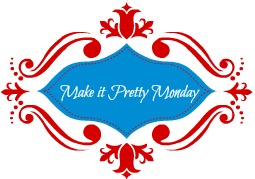
This lovely photo from
Houzz.com is a classic example of American Colonial revival style. White walls, a large brick hearth, a blanket box, a wing chair and some rustic elements such as the rifle and the copper wash tub. Colonial revival is seen as the quintessential American style and has not lost its popularity since the 1870’s despite many trends and design movements. It is an idealization of the past and a re-interpretation of the furniture and design of the 17th and 18th centuries. It has been a traditional style for the last 140 years but it has seen periods where it was immensely popular,usually as a response to social or economic turmoil. A definite revival of the style can be seen in the 1950’s and later in the 1970’s. The 1970’s movement of back to the land, and the fascination with farmhouse styling and all things handmade could be said to be reactions to the upheaval of the 1960’s. One could argue that the present DIY/Vintage movement is a further example of this same type of reaction, an eco-conscious return to the past as a response to global warming, terrorism and war.
Colonial Revival design in the 20th century falls into 2 categories: a formal 18th century style which is suitable for spacious homes and the American rustic style which was seen in smaller homes, cottages and rec rooms. Many homes were an amalgam of both as can be seen this living room below.

This 1950’s or 60’s living room has a mixture of traditional Colonial furnishings and more modern furniture. The Windsor chair, the portrait on the wall, the sconces, the tables and what appears to be a warming pan on the opposite wall are mixed with more modern sofas and lamps.
- Woodwork and trim used widely throughout the house including wood mantels and surrounds, corner cupboards in kitchens, and dining rooms, wainscot and crown moulding trim at ceiling and wide baseboards and case trim around doors and windows
18th C. Colonial
- Formal design
- Fine furniture, cabinetry making, and joinery techniques
- Fine hardwoods such as walnut, cherry, mahogany
- Reinterpretation of classic 18th & early 19th C. artisans such as Chippendale, Sheridan, and Hepplewhite. Duncan Phyfe was extremely popular.
- Fabrics included tapestry, velveteens, brocades
Early American
- Rustic interpretations of early colonial furnishings
- Mixed woods including knotty pine, maple, hickory, chestnut, and poplar
- Rag, hooked, and braided rugs
- Fabrics were cotton, wool, and linen
- Iron and brass fixtures and lighting
The early American style was very popular in the 1950’s and could be seen in informal living/dining rooms, bedrooms and kitchens ( think Betty Draper’s pine kitchen on Mad Men). This photo shows a style that I saw a lot when I was growing up.
And, how many of these maple dressers with the Chippendale handles have been manufactured in the last 60 years?
There seems to be no end to the popularity of this furniture especially in children’s bedrooms. The dresser that I painted was made in the 1940’s by Imperial-Loyalist, a Stratford Ontario manufacturer. Canadians of a certain age are familiar with Vilas and Roxton, reputable furniture makers, who produced maple and other hardwood pieces in the rustic American style. There is a lot of this furniture around from the 40’s, 50’s and 60’s; it’s very solid and well-made but definitely stuck in a time warp. What’s interesting about my dresser is the odd styling. It is maple, inside and out, has squared bun feet, very large squared knobs, and a gallery top. It seems to have wanted to be both Colonial and modern( the knobs) at the same time. It had a thick mahogany coloured stain which was typical for the time period. This is the only before photo that I have but you can see the colour clearly:

I painted it with a mixture of AS Emperor’s Silk and Barcelona Orange. I have used this combo before and it produces a vivid red. However, when it dried on this piece, it looked brick red, not a colour that I like particularly. Perhaps it was the orange and the red stain underneath that was doing this. Since I had run out of the paint after 2 coats, I mixed up MMS Tricycle and applied 2 coats of that. Now, the colour is a candy apple red which was what I was going for. The top section is in Pure White. I originally was not going to distress the knobs but the squared circle design seemed to invite it. I was inspired by a Martha Leone design which you can see
here. I hope she won’t mind my copying her.
Click to enlarge photos:
Sources:
Linking up with:


 />
/>
center>



http://www.notjustahousewife.net/
Rescue.Re-imagine.Repeat
http://www.alderberryhill.com/
http://www.astrollthrulife.net/
![]() http://romanceonadime.com/take-it-on-tuesday/take-tuesday-tiot-blog-hop-90/
http://romanceonadime.com/take-it-on-tuesday/take-tuesday-tiot-blog-hop-90/
http://dukesandduchesses.com/2013/09/project-inspired-link-party-grilling-feature


http://knickoftimeinteriors.blogspot.ca/
http://www.thestylesisters.blogspot.ca/
http://thebrambleberrycottage.blogspot.ca/












































